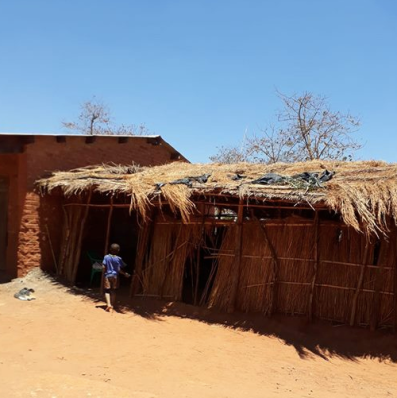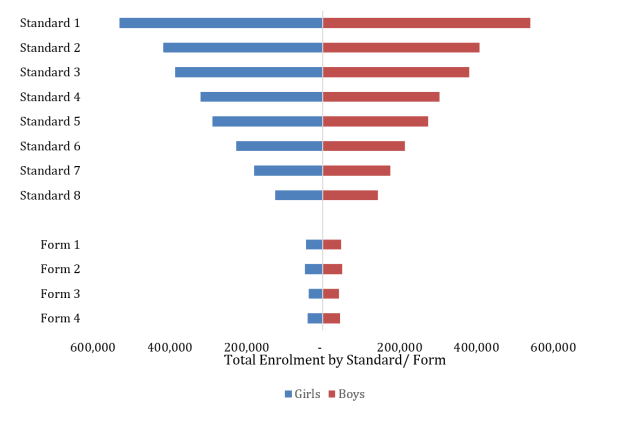By Esme Kadzamira, Centre for Education Research and Training, University of Malawi, Pauline Rose, Research for Equitable Access and Learning (REAL) Centre, University of Cambridge and Asma Zubairi, Research for Equitable Access and Learning (REAL) Centre, University of Cambridge.
As Malawi prepares for Presidential elections next May, the Minister of Education Bright Msaka has announced the abolition of secondary school fees with immediate effect. The move is being presented as removing barriers preventing all children accessing secondary education, but the speed of the change could end up increasing the marginalisation of children from the poorest households.
Malawi is not alone in abolishing fees for secondary schooling: other countries in sub-Saharan Africa, such as Ghana and Sierra Leone, have recently made similar announcements. The reform seems to be closely linked to national political cycles, while using the education Sustainable Development Goal’s target 4.1 as justification. While expanding access to equitable and inclusive quality secondary education has many benefits, connecting the move to political announcements raises important questions, with higher risks for long-term consequences.
Risks of overnight change
Political parties would today do well to remember the experiences of the roll-out of fee-free primary education in Malawi as part of an election promise in 1994. Overnight, primary enrolment surged by 50%, rising from 1.9 million to nearly 3 million students. With limited forward planning, the education system was caught unprepared, as our evidence at the time showed, and the poorest suffered the most. Primary schools struggled under the huge increase in the numbers of children enrolling without financial compensation for the loss of fee income
While the latest fee abolition will hit school budgets, fees themselves still only comprise a small share of the amount households spend on education. It is highly likely that schools will need to find ways to charge parents and communities even larger ‘unofficial’ sums to make up the fee gap. Such informal approaches to raising funds lack transparency, and can often hit the poorest households and communities the hardest.
The problem starts with primary
The Minister justified his announcement on the basis of the “financial challenges facing most parents especially the rural masses”, stating that “many children that get selected to secondary schools do not go to school because their parents cannot afford fees.”
However, our research suggests the problem actually begins earlier in the educational cycle. During a recent visit to a primary school near the lakeshore area of Northern Malawi, we witnessed enrolment of 400 pupils with just three teachers and three classrooms for all eight grades. To reach the school, we had to crawl uphill to avoid slipping and falling into the river, which had to be crossed via an unfinished bridge.
 This school is sadly not unusual. Most pupils enrolled at primary level are concentrated in the lower grades, where it is not uncommon – especially in more remote rural areas – to find up to 200 children being taught by a single teacher, sitting on dusty floors either in a cramped classroom space or outdoors. This lack of classrooms and teachers has persisted for the past 20 years and continues to contribute to limited learning taking place.
This school is sadly not unusual. Most pupils enrolled at primary level are concentrated in the lower grades, where it is not uncommon – especially in more remote rural areas – to find up to 200 children being taught by a single teacher, sitting on dusty floors either in a cramped classroom space or outdoors. This lack of classrooms and teachers has persisted for the past 20 years and continues to contribute to limited learning taking place.
Under conditions like these many of the most disadvantaged children do not even make it to the end of the primary cycle, let alone transition to secondary. Based on the latest government enrolment data, almost two-thirds of all school students in Malawi are concentrated in the first four grades of primary school. The last primary grade (Standard 8) accounts for just 5% of all enrolled children, as many have already left the system. As a result, enrolment in secondary school is minimal (Figure 1).
Figure 1: In Malawi, enrolment diminishes as children progress through the education system
 Source: Education Management Information System data, 2016
Source: Education Management Information System data, 2016
The most disadvantaged suffer the most, with only 15 out of every 100 of the poorest girls in rural areas entering secondary school, and almost none having the opportunity to complete this level (Figure 2). Without reforms at the primary level, these children will have no chance of benefiting from the abolition of secondary school fees. While aid from the UK and US is supporting reforms to improve learning in the first four grades, these have yet to take effect.
Figure 2: In Malawi, only around one-quarter of the most disadvantaged children complete primary school
 Source: Authors’ calculations from the World Inequality Database on Education (WIDE), 2015
Source: Authors’ calculations from the World Inequality Database on Education (WIDE), 2015
Skewed government funding
Malawian primary schools face a severe shortage of resources, hitting the disadvantaged the most. Even over the period of the Millennium Development Goals, government spending on primary education as a share of total education spending has fallen from 53% in 2000 to 44% in 2015. By contrast, both secondary and post-secondary have seen their share rise. In 2015, secondary education’s share of total spending was 28%, up from 21% in 2000.
This shift away from primary schooling is even more concerning given that spending on education fell by as much as 13% between 2013 and 2017 in real terms. In addition, our recent analysis shows that Malawi has one of the most skewed public spending patterns across African countries: only around US$10 is spent on the poorest 10% of the population for every US$100 spent on the richest.
Yet despite the equity case for greater investment in primary education, particularly in the lower grades, the new commitment to fee-free secondary education will clearly require additional resources. Schools will need compensation for lost revenue in collecting fees, but also more money for the extra buildings and teachers needed. It is not clear that a careful analysis of these cost implications has yet been undertaken. Without an immediate increase in funding for the education sector overall, the already limited resources available for primary schooling are likely to be squeezed even further, again harming the most marginalised most.
A better solution
A more cost-effective – and equitable – way for government to support ‘the rural masses’ would be to prioritise funding to the parts of the system that will enable the most disadvantaged to make progress.
First, it would require prioritising education as a whole within the national budget. Second, it would mean giving greater importance to primary education within the education budget. Third, and crucially, it would be about making sure the lower primary grades get their fair share of resources. Fourth, it would mean targeting support towards the most disadvantaged who do get to the end of primary, and for whom secondary school fees do act as a genuine impediment towards secondary school transition. Fifth, current levels of aid to education are very small. If donors are willing to invest more, primary schooling needs to continue to be their priority.
The lessons from the introduction of fee-free primary education almost 25 years ago are just as relevant for Malawi’s politicians today as they announce fee-free secondary schooling. If past experiences have taught us anything, it is that without careful planning, announcement of such policies will have lasting implications for efficiency, equity and learning.





Really touching facts. Need for more teachers and infrastructure to equitably distribute inclusive quality education
LikeLike
Africans need proper planning. Leaders should not be using the political/election cycles to woo the masses into their traps. So sad. Its Tom from Nairobi, Kenya.
LikeLike
Pingback: Strengthening education and skills in Africa: Lessons from India – The Education Times
Pingback: ARTICLE REVIEW- Who Benefits from Abolishing Secondary School Fees in Malawi and what are the Costs- Kadzamira, E. et.al | Shelf4school
Pingback: A Comment on the Article “Who benefits from abolishing secondary school fees in Malawi, and what are the costs?” – My Scholar Education
Pingback: Article Analysis by Azizullah Khaskheli – My Scholar Education